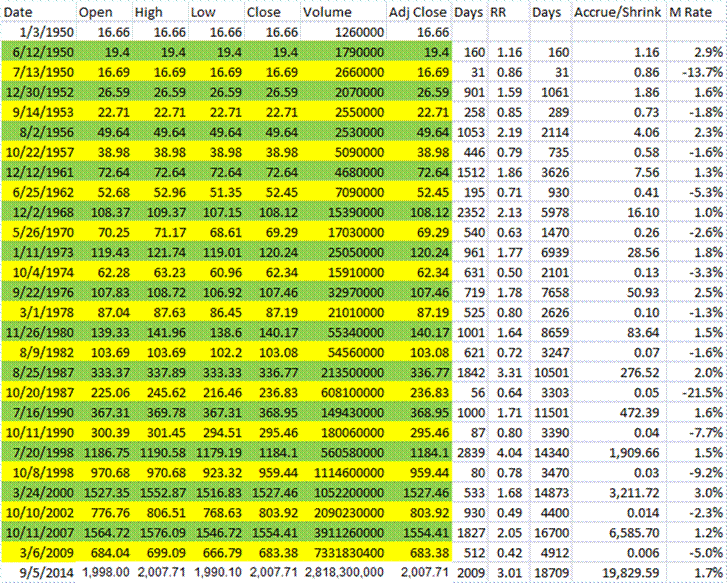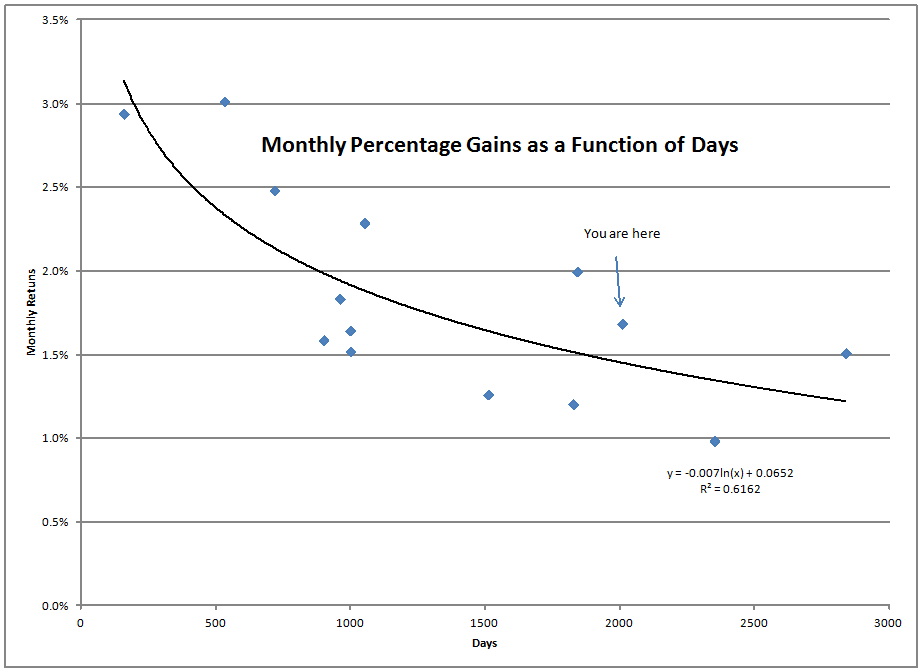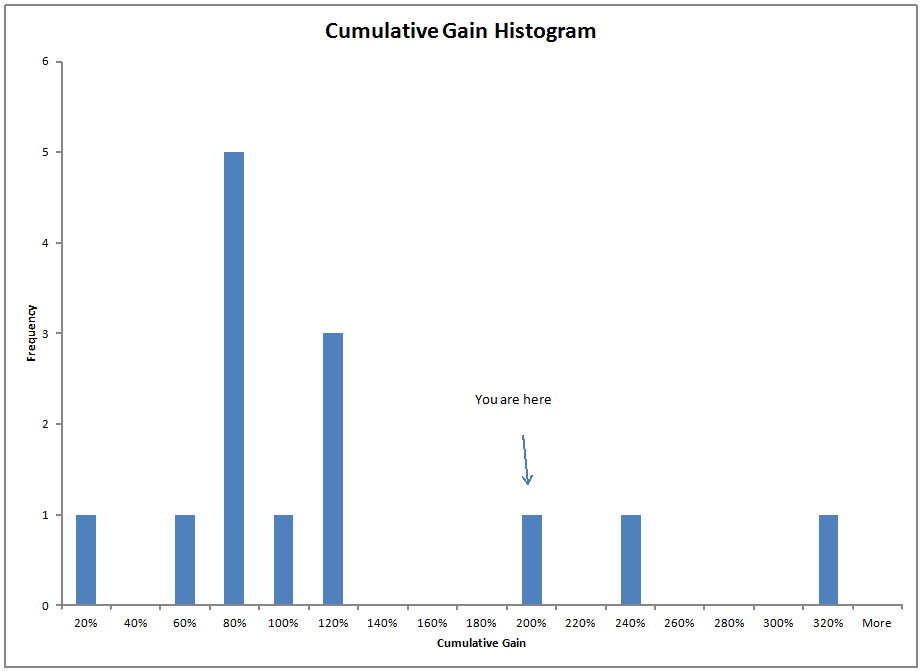
This is the third time I have written this article during this bull market. ?Here are the other two times, with dates:
- Goes Down Double-Speed?2/17/2011
- Goes Down Double-Speed (Updated)?5/22/2013
The first time, we had doubled since the bottom. ?Second time, up 2.5x. ?Now it is a triple since the bottom. ?That doesn’t happen often, and this rally is getting increasingly unusual by historic standards. ?That said, remember that every time a record gets broken, it shows that the prior maximum was not a limit. ?If you think about that, after a bit you know that idea is obvious, but that isn’t the way that many people practically think about extreme statistics.
Let’s look at my table, which is the same as the last two times I published, except for the last line:
Since the second?piece, the gains have come slowly and steadily, though faster than between the first and second pieces. ?As I said last time,
“In long recoveries, gains first come quickly, then slowly, then near the end they often come quickly again.? Things are coming quickly again now, but who can tell how long it might persist.”
Indeed, and after the first piece, the market did nothing for about 16 months, after which the market started climbing again at a rate of about 1.5% per month for the last 27 months. ?Though not as intense as the rally in the mid-’80s, this is now the third longest rally since 1950, and the third largest. ?It is also the third most intense for rallies lasting 1000 calendar days or more. ?This is a special rally.
And now look at the cumulative gain:
Does this special rally give us any clues to the future? ?Sadly, no. ?Or maybe, too much. ?Let me spill my thoughts, and you can take them for what they are worth, because I encouraged caution the last two times, and that hasn’t been the winning idea so far.
- To top the rally of the ’90s for total size, we would have to see 2700 on the S&P 500.
- It is highly unlikely that this rally will top the intensity of that of the ’50s or ’80s. ?Gains from here, if any, are likely to be below the 1.7%/month average so far.
- For this rally to set a length record, it would have to last until 12/14/16 (what a date).
- Record high profit margins should constrain further growth in the?S&P 500, but that hasn’t worked so far. ?As it is, there are very good reasons for profit margins to be high, because unskilled and semi-skilled labor in the capitalist world is not scarce.
- Rallies tend to persist longer when they go at gradual clips of between 1-2%/month. ?Still, all of them eventually die.
- At present the market is priced to give 5.5%/year returns over the next 10 years. ?That figure is roughly the 85th percentile of valuations. ?Things are high now, but they have been higher, as in the dot-com bubble. ?We are presently higher than the peak in 2007.
- On the negative side, it doesn’t look like the market is pricing in any war risk.
- On the positive side, I’m having a hard time finding too many industries that have over-borrowed. ?Governments and US students show moderate?credit risk, as do some industries in the finance and energy sectors.
- Finally, the most unusual aspect of this era is how little competition bonds are giving to stocks. ?In my opinion, that idea is getting relied on too heavily for a relative value trade. ?Instead, what we may find is that if bond yields rise, stocks, particularly dividend paying stocks, will get hit. ?By relying on a relative yield judgment for stocks, it places them both subject to the same risks.
I still think that we are on borrowed time, but maybe you need to regard me as a stopped digital clock with a date field, which isn’t even right twice per day. ?Historically, if the rally persists, stock prices should only appreciate at a 8-9% annual rate with the bull this old.
That’s all for now. ?I’m not hedging my equity portfolio yet, but maybe my mind changes near 2300 on the S&P 500, should we get there.
PS — the title comes from the fact that markets move down twice as fast as they go up, so be ready for when the cycle turns. ?The first article in the series focused on that.



